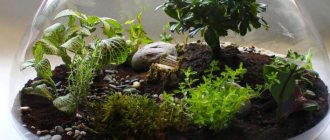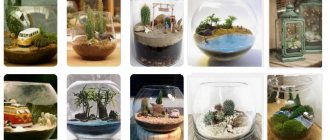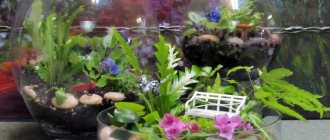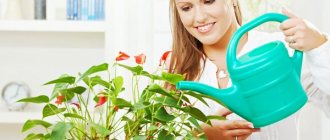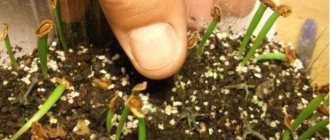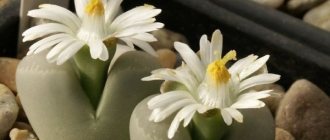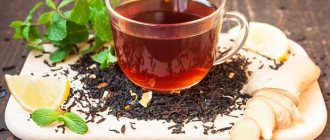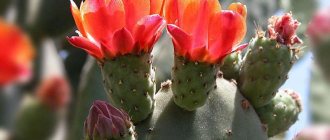DIY compositions of indoor plants and flowers
You can create interesting compositions with your own hands from indoor plants. However, please note that not all flowers will grow well in the same pot. We will show you how to make flower arrangements in pots.
An interesting DIY arrangement of indoor flowers can look very impressive, but before you decide to put it together, you should take a closer look at all the plants that will be used in it. It often happens that an initially attractive arrangement in a pot, after some time, loses its decorative effect, and the flowers that form the composition grow excessively, become sick or die (for example, croton or coleus grow greatly) and their shoots become excessively elongated. But beautifully blooming guzmania and freesia will only be decorative for 2-3 months, because after flowering their rosettes die off. Therefore, before purchasing or creating compositions from indoor flowers, you must first be well aware of the requirements for the soil of all types used in it. Since, if you plant sun-loving flowers together with shade-preferring flowers, it may turn out that some of them will suffer from a lack of light (in a dark place the shoots will begin to lengthen and the leaves will turn pale), while others will suffer from leaf burns from excess sun and flowers.
In the photo: New Guinea balsam 'SunPatiens', Epipremnum 'Neon', Asparagus Meyeri 'Meyeri'.
What flowers should not be planted in one pot?
In this regard, you should not compare light-loving papyrus, yucca, kalanchoe or colored varieties of indoor flowers (for example, variegated codiaum is called croton) with partial shade-preferring ferns, ivies, spathiphyllums or begonias.
Flowers that have different indoor humidity requirements should not be combined in one composition. Species that prefer constantly moist soil (for example, spathiphyllum, fern, ficus dwarf, fittonia) cannot be planted in the same pot with plants that are sensitive to excess water in the soil (for example, succulents, dracaena, hoya, Saintpaulia violet, sansevieria), they quickly They will lose their decorative appearance and begin to get sick. Some will suffer from drought (the leaves will dry out and the flowers will become susceptible to attack by pests, such as spider mites), others will wither due to overwatering (root rotting, death of plant parts, fungal diseases).
In the photo: caladium 'Aaron', cirtomium crescent, heuchera 'Key Lime Pie', spotted lilyweed 'White Nancy', ivy and pink catharanthus.
Plant size
Another important factor determining the compatibility of indoor flowers in one composition is the size and growth pattern of individual species. When young, most plants are small in size, however, over time, some species can grow larger than others. Some constantly maintain a compact appearance, others develop long shoots or reach large sizes. Therefore, if you decide to plant a lush rubber ficus or dieffenbachia with a small fittonia, begonia or violet in one pot, then after a while they will need to be transplanted into separate pots, since the whole composition will lose its harmonious appearance (large flowers are less drowned out).
A similar situation concerns flowers that grow widely using underground rhizomes and tendrils (for example, cyperus, nephrolepis) or form a branched root system (for example, chlorophytum).
However, in their case, at least some solution may be to plant the plants in separate pots and placed in one common container. To camouflage individual pots, you can cover them with moss or other natural material.
In the photo: different types of sedums and echeverias
Harmonious compositions in a pot
When comparing plants with each other, we must remember to maintain appropriate proportions. We will get the desired effect when we use three types of plants to create a composition with our own hands: tall, which represent the most powerful and highest element of the composition, low and medium, which will fill and complement the entire composition.
Examples of compositions that remain decorative for a long time consist of the following combinations:
- spathiphyllum 'Gemini' + royal begonia + ficus 'Sunny',
- Hamedorea palm (large plant, but slow growing) + nephrolepis cordifolia fern 'Duffy' + ficus 'Sunny',
- spathiphyllum 'Gemini' + ficus 'Sunny' + fittonia,
- spathiphyllum 'Gemini' + cordyline + royal begonia + ficus dwarf,
- chamedorea + Mason begonia + common ivy,
- Bauer's begonia + bush cordyline 'Kiwi' + common ivy.
floral-house.ru
Hibiscus and soleirolia
Another name for hibiscus is “Chinese rose”. This is a beautiful, evergreen bush; under comfortable conditions it grows up to 2 meters. The large leaves have serrations. "Chinese rose" blooms with large and bright flowers. Hibiscus grows slowly; it will take a long time for the bush to grow. This requires sufficient lighting, abundant watering and high humidity in the room.
Saltirolia is a herbaceous plant with neat leaves and thin shoots. This flower loves abundant watering, moist air and room temperature. Florists use soleirolia as a ground plant, plant it in hanging slides, and decorate aquariums and terrariums.
Hibiscus and soleirolia get along well in the same pot. To do this, you need a large pot in which the hibiscus is planted, and the soleirolia is located at the foot. This will create a “green carpet” effect. This duo should be watered with caution. If you regularly flood a flower, rotting of the soleirolia roots will occur, and then the hibiscus.
With the help of these tips, flower growers will create a fashionable composition on their windowsill. You can plant not only these plants, but also many others. The main thing is that the plants are similar. This way, problems with their growth can be avoided and the “flower duet” will delight you with its beauty for many years.
Compositions of indoor flowers
Every apartment or house will look empty and uncomfortable if there are no indoor plants. Indoor plants enliven any room and create a unique microclimate.
You can add an elegant touch to the interior design of an apartment or house by using not only individual plants, but also compositions of indoor flowers. Designers and florists can combine small and large plants, smooth and prickly, flowering and non-blooming, bright and muted in shades.
The most important rule in this case will be that the plants can grow next to each other, and they will not have to be transplanted to other places.
Obviously, the rules for caring for plants in a composition with common soil should be the same. In the case of a combination of plants in their own pots, the space between them is filled with decorative material (sisal, colored pebbles, pebbles). Florists often use the latter option as a gift, combining potted plants in a large wicker basket.
Indoor plants in the interior of an apartment, correctly assembled into a single composition, represent a living decor that looks harmonious against the background of other things.
In order to create compositions from indoor plants, you need to understand what types of compositions there are and know the rules for their composition. Having learned this information, not only a florist, but also any gardener will be able to create beautiful mini-gardens from indoor flowers.
Types of compositions from indoor plants
Depending on the interior of the apartment, the florist chooses what type of composition will organically fit into the surrounding environment. The following types of compositions are distinguished:
1. Mini-garden of indoor flowers in one container.
Plants can accommodate:
- in the basket;
- in large or long pots;
- in a flowerpot;
- in containers of unusual shape (for example, figurines with a recess, wooden driftwood);
2. Vertical floral panels.
Subtypes of panels are:
- a flower picture is a light structure, inside of which there is earth; plants are planted in special holes. Watering is carried out from above the container.
- a living wall is a vertical garden, the design of which is more complex and can be divided into several compartments. Plants in a vertical garden require daily care and special drip watering;
3. Florariums are a group of plants planted in glass containers of various shapes. We talked about florariums in detail in this article.
4. Horizontal pot group - a group of flowers in pots located on one stand or pallet;
5. Vertical pot group - a group of flowers in pots arranged vertically or in a cascade.
Vertical pot group
If space in the apartment is limited, but the gardener’s desire to have a beautiful garden at home is enormous, then vertical pot groups help with this.
Vertical compositions are placed on different surfaces:
- wooden or metal stands;
- metal picket fence on the wall;
- hanging flowerpots or baskets;
- shelving (for example, corner);
- walls with a special recess for pots.
For vertical compositions, various indoor plants are used, but most often ampelous ones. The name "ampel" plants (from the German Ampel) was given for their hanging and creeping shape. Bellflower, nidularium, ivy, ficus creeping, fittonia, hoya and other ampelous flowers can be seen in potted groups.
The vertical arrangement not only visually increases the volume of the room, but also improves the microclimate in the house, which is why these compositions are used in large houses by designers.
The most important thing for both flower growers and professional craftsmen is to follow certain rules for creating compositions.
Rules for composing flower arrangements
To create compositions of indoor plants, you need to know how to plant plants so that they grow in the same pot or are located nearby in a pot group.
There are a number of rules for planting plants in a composition:
- Low plants are placed in the foreground, tall plants in the background;
- Tall plants can be the center of the composition, surrounded by small plants;
- Plants that grow well next to each other are selected;
- Each plant should have its own space, that is, planting should not be too dense, and the growth rate of each plant should be taken into account.
- It is important to create a sense of volume in the composition.
It is easiest to apply these rules when creating compositions from plants of the same type, such as cacti and succulents. It is more difficult to do this with different types of plants, but in this case they look at the following characteristics:
- moisture-loving plant;
- need for sunlight;
- temperature regime;
- growth rate;
- ventilation of the room.
Growing together in one container, properly selected plants create a microclimate that makes caring for them easy. What plants are used to create flower arrangements and what combination of them does not create difficulties in care?
Plants for flower arrangements and their combinations
To create compositions in a pot, various plants are used, among which cacti and succulents are very popular. Read about the varieties of home succulents and the rules for caring for them in the article “Indoor succulent plants.” They are sun-loving and easy to care for; they do not need to be replanted quickly. Other plants are more demanding to care for and need to be transplanted into other pots or containers as they grow.
Of course, to create indoor compositions, you don’t need to limit yourself only to succulent plants. Below are indoor flowers with photos of plants suitable for decorating compositions, and features for caring for them.
Anthurium Decembrist Crassula Orchid
Anthurium needs moderate watering 2-3 times a week, indirect sunlight, air temperature 18-23 degrees.
Decembrist should be watered 1-2 times a week. It is optimal for the plant to be in partial shade at an air temperature of 18 to 30 degrees. Crassula or money tree is a sun-loving plant, but direct sunlight should be avoided. In summer, the optimal temperature for the plant is 20-25 degrees, in winter 10-16. You should water the money tree no more than 2 times a week.
Orchids need bright light and a temperature of 20 to 25 degrees. You can water only with warm water from the bottom of the plant and no more than once a week. Orchids need to be moisturized, especially in winter. Dendrobium nobele and phalaenopsis are most often planted in compositions.
Hoya Spathiphyllum Schefflera Violet
Climbing Hoya is divided into two subspecies. Some Hoya plants love sunbathing, while others should avoid direct sunlight. Excessive watering is harmful for hoya; the plant is watered as the soil becomes dry, but at the same time the flower is moistened. As for the temperature, the optimal temperature will be 17-25 degrees.
Caring for spathiphyllum at home is not difficult. The plant likes abundant watering 2-3 times a week, room temperature 22-23 degrees and light partial shade. The most important thing for spathiphyllum is to avoid drafts and overflow of soil.
Violet is light-loving, but direct rays should be avoided. The flower does not need excessive watering more than 2 times a week, but loves moisture. The optimal temperature is 20-25 degrees.
Schefflera loves spraying and grows well in both sunny and partial shade. The plant requires moderate watering 1-2 times a week and an air temperature of 15-23 degrees. But still, you should not expose the shefflera to direct sunlight.
The following examples of compositions from these colors look interesting in combination:
- Anthurium + fittonia + hedera;
- Crassula (money tree) + cacti + succulents;
- Spathiphyllum + phytonia + chamedorea + hedera;
- Hanging gardens of several types of hoya in flower pots;
- Violet + orchid (for example, dendrobium nobele) + fittonia;
- Schefflera + ivy.
The creation of a flower arrangement depends on the imagination of the author, and its complexity depends on the level of professionalism. Professional florists can create floral works of art even in a small apartment. Not only flower masters, but also novice flower growers are able to create a beautiful and amazing mini-garden with their own hands.
Making potted arrangements with your own hands
As we have already said, flower arrangements made from cacti and succulents are the most popular among beginning gardeners. Such compositions are not difficult to create.
To create the simplest mini-gardens, we will use step-by-step instructions:
- Let's prepare the necessary materials and tools - expanded clay, special soil, decorative elements and stones, a long pot, a small spatula, a watering can.
- Place drainage at the bottom of the pot and add soil;
- Let's take several types of cacti and succulents and plant them in the ground in accordance with the rules for composing compositions;
- We will water the plants;
- We will decorate the surface between the plants with decorative elements and stones.
All of the above steps are demonstrated in detail in the video master class. Watch and be inspired!
delayart.ru
Compositions of flowers in different pots
The easiest way is to create a flower arrangement from plants planted in separate pots. In this case, there is no need to select flowers with similar conditions. Cacti and moisture-loving species can grow nearby; you just need to take into account the lighting level for each plant.
Flower arrangements in pots from indoor flowers can be different. In spacious rooms it is common practice to place them on the same level. And when there is not enough space, they use steps, shelves, and hangings. Special boxes and flower stands are also used for flower arrangements.
Single level placement
This is the best option for spacious and bright rooms. Flowers are arranged in a composition depending on what part of the room it will be in. If the group is placed in a corner or near a wall with a view from one side, then the largest plants in large pots are placed in the background, and smaller ones in the foreground.
T
These provide a good view of each plant, and large and tall specimens will not obscure small ones.
When placing the composition in the central part of the room, the plants are placed differently. When viewed from all sides, the largest and tallest plants in large pots are placed in the center of the group, and smaller ones are placed closer to the edge.
Multi-level placement
This option is suitable for both spacious rooms and small spaces. Often, when placing a flower arrangement, steps or shelves are used on which pots are placed. This allows you to create a composition from a large number of plants of the same size. Thanks to the tiered placement, you can consider each of them.
Also, plants in the composition can be placed on suspensions. This option is good for groups with upright and hanging species. Hanging flowers with their hanging shoots are very decorative in pots hung on the wall. Here they are visible best, they are not covered by other plants in the composition.
The vertical gardening of the room looks very beautiful.
To do this, special mounts are created in the wall for pots in which hanging species and plants with openwork lush leaves are planted. When vertical gardening is done correctly, the pots are not visible, creating the impression of a single green wall.
Flower boxes and flower beds
When creating flower arrangements, special flower boxes and flower boxes are often used. Flower stands are decoratively designed flower stands for placing them at different levels.
Usually these designs are small in size to create modest compositions in city apartments, but there are flower beds of impressive size.
Flower boxes are also a decorative element. They hide flower pots well, leaving only lush greenery visible. The drawers themselves can have different appearances; they can be selected for any interior.
Rules for composing a composition of potted plants. Indoor kindergarten
Arrangements of green indoor plants, succulents or flowers enliven the room. They look bright and expressive. Even a person far from floristry can create such beauty by familiarizing himself with some rules for composing a composition of potted plants and their types.
Advantages of decorating an indoor green corner
The advantages of compositions formed from green pets include the following:
- amazing appearance;
- plants collected in one place are easier and more convenient to water;
- by combining plants and placing them in one place, you form a dense green crown of the indoor garden, which has a positive effect on all the plants in the composition;
- indoor flowers, collected in one place, help increase air humidity, which is important for the most delicate flowers that grow on the windowsill;
- Working on compositions brings a lot of pleasure.
Standard compositions
Plant combinations in the classical interpretation look like a combination of 4-12 plants in plastic or clay pots. At the same time, flowerpots that differ in shade, size and type look more impressive, forming a group that is attractive to the eye.
In 90% of cases, low decorative foliage flowerpots are used to form the outline of a composition of potted plants, and flower pots are used to add a bright accent. This is a close-up of the green group. Secondly, further away, taller plants with dark large leaves are located.
For a true decorator, not only professional compositions look attractive, but also those that consist of harmoniously selected plants of the same species group with leaves of different contours and colors. Such combinations look no worse.
Professional compositions
Combinations of flowers and green plants of this type can most often be observed in public buildings, although at home on a reduced scale they look no less attractive and organic, filling an empty corner in a room or diluting a boring minimalist interior.
An integral component of such a group are flowerpots, which differ from each other in height and are combined with each other. You can decorate such pots yourself. Decorating flower pots with your own hands gives the composition exclusivity. The plant located in the farthest corner should be the most voluminous or stand on a stand. The foreground is filled with flowering pots, which are replaced with others as the flowerpots fade. In the background there are ampelous plants, beautifully entwining bindweed.
Features of keeping green plants in a warm, dry room
Compositions of potted plants kept in rooms with central heating that require humidified air are usually placed on special trays covered with a layer of pebbles. The main thing is to take a waterproof stand with a depth of 4-5 cm. The length and width are selected based on personal considerations or the volume of the indoor garden.
Having prepared everything you need, pour pebbles onto the bottom of the tray and spread them in a thin layer (2-2.5 cm). Then pour water so that the lower pebbles are in the water. Flowerpots are placed on pebbles, and the structure can even be placed on a shelf near the radiator. With this placement, the air humidity around the plants increases 3-5 times.
During watering, excess water drips into the tray. When evaporated, it promotes a favorable environment for the development of green plants as part of a composition of potted plants.
Collection of flowers
Many homes have entire collections of closely related plants. You can find such compositions among beginning beginners and some experienced gardeners who appreciate beauty. Hobbyists start with a combination of cacti and succulents that look attractive both on a windowsill and on a wall when placed in a vertical position. But we’ll talk about wall-mounted indoor gardens a little later.
Experienced gardeners manage to collect dozens of expensive and unique combinations, including Uzambara violets, ferns, and orchids.
In addition to the general decorative effect, the collections are united by one property - the individuality, rarity and beauty of each plant.
Compositions of indoor flowers in one pot look interesting.
Vertical gardening
Previously, it was believed that vertical gardening was a necessary measure for rooms with double frames, window sills, under which heating radiators are located, or simply not enough space to place a flower arrangement of several dozen plants. Today, a green panel or wall of succulents is considered to be an element of living interior decor, which naturally draws attention.
In boutiques and lobbies of apart-hotels you can see glass boxes suspended from the ceiling, filled with soil-sand mixtures with the addition of crumbs and pebbles. Succulents and cacti are planted in such containers, and such a composition looks very impressive. Especially in contrast with white light walls.
The creation of compositions from indoor plants is actively used in the design of residential premises, foyers, halls, and decorative lattice screens. In this case, climbing plants are used. To decorate a room, pots with flowerpots are mounted on special brackets in a suspended state or placed on special stands, partitions, or screens. This type of landscaping is also used for zonal division of a room.
Compositions are often created from indoor flowers in one pot, which are used for hanging landscaping of window openings, niches, building entrances, arches, if the architectural layout of the premises contributes to this.
A corner stand used for vertical gardening looks organic in an interior made in monochromatic colors. One pot with a flowerpot is placed on each shelf. For the composition, it is better to use one type of ampelous plants that form an arch, column or pyramid of leaves and flowers.
Floral arrangements for the interior, consisting of begonias or coleus, are grown indoors in groups or individually - planted in separate flowerpots.
Green window
Window sill landscaping can transform a nondescript room into a veritable display of flowers and green houseplants. By equipping the window with stands or hanging shelves, you can create multi-level landscaping. For this purpose, durable plastic structures are used, fixed at different levels along the window.
An indoor garden is a container filled with a variety of green plants. You can place potted plants inside the container or plant flowers directly into the container. The advantage of growing domestic green plants this way is additional protection of the root system from temperature changes and changes in air humidity.
Green plants planted in flowerpots look good. Combine, move and modify compositions, and in addition, you can decorate flower pots with your own hands.
This method of growing plants is not yet very popular. Probably because gardeners are accustomed to growing plants individually rather than collecting them in whole groups.
There is nothing complicated in selecting plants and combining flowerpots. The main thing is to understand the rules for arranging an indoor garden.
fb.ru
Ideas and principles for creating unusual indoor gardens: selection of plants and pots
For indoor plant lovers who are tired of monotony, there is an option for variety. Indoor gardens are a combination of beauty, originality, and imagination. This article reveals the basic principles of selecting plants, depending on their location. Ideas for creating mini-compositions are described, plant species that grow well in the proposed containers are suggested.
Principles of plant selection
Taking into account the basic rules of phytodesign, the following criteria for selecting plants can be identified:
- The size of indoor plants should correspond to the size of the room. If the room is large, then small flowers will not be noticeable, but in a small room, large flowers and pots will further reduce the visual space.
- When choosing a pot, you need to know what composition will be placed in it. If the pot does not match the number of plants, the results will be disastrous. If there is too much space, some plant species may die and others will spread into unsightly shapes. But in cramped conditions, a battle for survival will begin, the strongest will win.
- In the far corner of the container, when forming a composition, you need to place plants higher, in the foreground - lower, climbing plants or hanging ones.
- When purchasing plants, you need to inspect them and make sure that they are healthy: without a damaged root system, there are no strange formations or damage on the leaves.
- When composing a composition, you need to know the conditions of keeping all plants. You cannot combine plants that love the sun and shade-loving ones. Also, it is worth considering the temperature regime, the chosen colors, and the attitude to moisture. If this is not taken into account, they will not get along together.
- When combining plants with a large root system and a small one, it is better to place flowers in a large pot in appropriate pots, and cover the top with a ball of turf, moss or peat. And if desired, exchange some flowers for others.
Miniature gardens
These funny little compositions will dispel sadness and tension just by looking at them. Many options with different small plants have been invented to create mini-gardens indoors:
- Gardens in cups. These little masterpieces are made according to the general principle of planting. You need to select low-growing, miniature flowers. Suitable for such compositions are: Fittonia, Spathiphyllum Wallis, miniature Phalinopsis, asparagus, Pilea appressata, Soleirolia, Mühlenbeckia entangled, Selaginella bezopodniki.
Original miniature composition in a cup
Mini garden in a cup with fabulous decor
Mini garden in a cup
- Rock gardens. Compositions of plants that are planted in stones instead of pots look unusual and original. For such purposes, rocks that have many pores and are airy and light are suitable. You can take limestone, sandstone. These stones are relatively easy to shape. To plant plants in them, you need to drill or hollow out a hole (or several) inside, fill in the substrate and plant the plants. That's all. You can place it on a table, window sill, shelf - wherever you want, as long as the plants feel good. But the plants need to be selected correctly - not everyone will grow in such an unusual pot. If the stone is not large, the recesses are small, then succulents are suitable: sedum, sedum, lithops. Small cacti and saxifrage also work well. And if the sizes are a little larger, then you can take cyclamen, cotula, gerbil and the same succulents.
- Gardens in bottles (glasses). These small compositions in a small glass container are perfect for the kitchen, living room or office. It is not difficult to make such compositions, except that it is inconvenient to place plants in a bottle. For such gardens, flowers are selected that grow slowly, do not require much care, and do not require frequent watering and irrigation. Don't forget about the drainage layer - it is required. The following plants are suitable: low-growing, dwarf succulents and cacti, miniature violets, mosses, dwarf ferns, fittonias, soleirolia, selaginella bezopodniki.
Garden in a glass
Garden in a bottle
- Shell gardens. Such small compositions touch us with their simplicity and miniature size. Several pieces at once look great. The sizes of shells may vary. Plants are planted with a small root system and grow slowly. You can take curly or hanging ones, then the compositions can be hung near the window. The following flowers are suitable: sedum, soleirolia, dwarf juvenilia, muhlenbeckia, selaginella unpeduncle.
Flower arrangement of shells
Mini garden in a shell
In addition to such miniature gardens, you can create original compositions by using some natural materials in the form of pots.
Flowers in coconut shell
Coconut shells, without pulp, are suitable for these purposes. Make several drainage holes, fill in the required soil mixture, and plant a flower or composition. This flowerpot looks good both on the windowsill and hanging. You can plant different flowers, depending on the size of the pot and the needs of the flower itself. Orchids feel good in such flowerpots.
Coconut pot
Hanging coconut pot
Flowers in stumps
Making such pots from stumps will take time, because you need to hollow out a decent recess inside and make drainage holes. But the result will be magnificent: by combining the number of stump flowerpots or the number of plants in one stump, you can get original and environmentally friendly compositions.
Flower arrangement in a stump
Flowers in stumps
Thus, by creating flower gardens, you can dispel everyday boredom and monotony. A large number of proposed options will help to translate original ideas into beautiful compositions.
www.dacha-svoimi-rukami.com
What is a florarium?
Almost two hundred years ago, Englishman Nathaniel Ward first came up with a glass mini-greenhouse for transporting plants. It became the prototype of a modern florarium (phytoterrarium) - a composition of small plants, stones, sand and artificial decor, placed in a transparent container (glass or plastic) . This is also the name of the direction in phytodesign.
Advantages:
- aesthetics : skillfully designed florarium - spectacular and original interior decor,
- small size : convenient for use in small spaces,
- environmental friendliness : living plants are an excellent source of oxygen,
- variety of design : you can choose containers, plants and compositions to suit any interior style,
- practicality : one container can accommodate several types of plants at once,
- mobility : if necessary, it can be easily moved and placed in different parts of the house,
- ease of care : does not require much effort and time, which is convenient for beginners in floristry, with frequent travel and increased busyness.
Important: florariums maintain a microclimate native to plants, including those that are difficult to grow indoors.
Several types of plants can coexist in a florarium
Flaws:
- high price for ready-made models : sometimes it is more profitable and easier to create a mini-garden yourself,
- fragility of the material : if dropped, glass walls can break, and plastic walls can crack,
- sealed bottom : due to the lack of a tray, water accumulates under the roots, so you can’t overdo it with watering,
- limited selection of plants : container sizes and special growing conditions in a mini-garden are not suitable for all types of plants,
- need for special tools : caring for miniature “green pets” is more convenient with small-sized equipment.

